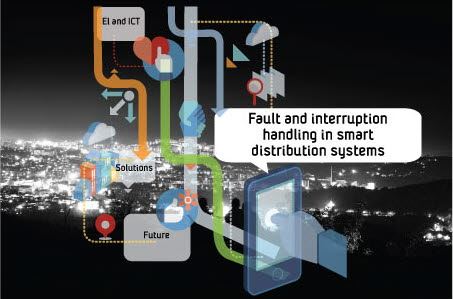Sensors capable of detecting grid faults are important elements in smart distribution grids. Utilization of this information gives potentials for reducing both frequency and duration of interruptions in the electricity supply. The sensors can be used for smarter handling of faults and interruptions through faster fault detection, localization and isolation. This enables faster restoration of electricity supply for those customers that have experienced interruptions. The sensors' ability to detect faults in the grid will also contribute to less connections and reconnections during outages, thus resulting in fewer short interruptions and voltage drops.
The information about grid faults can be collected by connecting the sensors to the control system. Further, this information can be combined with various measurements in the grid for calculation of the distance to the fault location. This will reduce the time needed searching for the fault, and provide decision support for the operators enabling faster connections to restore the supply.
Utilization of such smartgrid technologies can be taken a step further in a self-healing grid. Such grids are characterised by exploitation of digital components and communication solutions for monitoring the grid and automatically detecting and isolating faults, and restoring the supply to other parts of the grid. This will give additional reductions in frequency and duration of interruptions.
These kinds of equipment will be tested and demonstrated in the real grid to verify the functionality and expected effect. A new methodology will also be developed for calculation of costs and benefits using the smartgrid technology. The objective is to identify in which parts of the grid the largest potentials can be achieved and where the solutions are profitable. The methodology will also provide decision support for the operation of the grid. The project results will contribute to a more efficient operation and reduced socio-economic costs of interruptions in the electricity supply.
Demo and testing of fault indicators took place in the distribution grid at Hafslund Nett and Skagerak Nett, respectively. There are 7 areas in total, covering both overhead and cable grids. Different types of short circuit and direction finding earth fault indicators were tested, in combination with remote control and utilisation of measurements for estimation of fault location. Later in the project, automatic sectioning (self-healing) programs were tested and demonstrated.
The project was part of Demo Norway in the Norwegian Smart Grid Centre.
The project was led by Hafslund Nett
Contact:
Contact at Skagerak Nett:
This project was an Innovation projects in business and industry (IPN) with funding from The Research Council of Norway.
IPN targets business and industry players, and includes projects that generate knowledge and skills for development of new or improved products or services.

